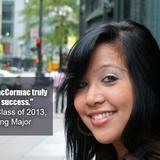- St. Augustine College is an independent, bilingual (dual language) institution of higher education created under the auspices of the Episcopal Diocese to make the American system of higher education accessible to a diverse student population, with emphasis on those of Hispanic descent; to strengthen ethnic identity; to reinforce cultural interaction; and to build a bridge to fill cultural, educational, and socio-economic gaps.
School Highlights
St. Augustine College serves 954 students (62% of students are full-time).
The college's student:teacher ratio of 7:1 is lower than the state community college average of 21:1.
Minority enrollment is 98% of the student body (majority Hispanic), which is more than the state average of 53%.
Quick Stats (2025)
- Enrollment: 954 students
- Private-state tuition: $9,576
- Student:teacher ratio: 7:1
- Minority enrollment: 98%
- Source: Integrated Postsecondary Education Data System (IPEDS)
Top Rankings
St. Augustine College ranks among the top 20% of public schools in Illinois for:
Category
Attribute
Debt For Students
School Overview
The teacher population of 132 teachers has stayed relatively flat over five years.
St. Augustine College
(IL) Community College Avg.
Carnegie Classification
Baccalaureate/Associate's Colleges: Mixed Baccalaureate/Associate's
Associate's Colleges: Mixed Transfer/Career & Technical-High Nontraditional
Institution Level
Four or more years
At least 2 but less than 4 years
Institution Control
Private not-for-profit
Public
Total Faculty
132 staff
227 staff
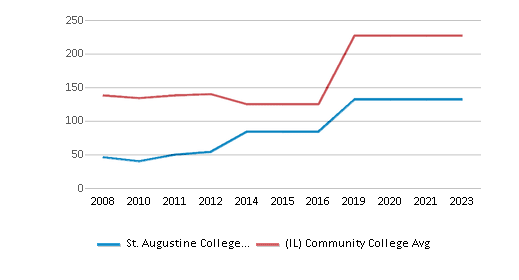
School Calendar
Student Body
The student population of St. Augustine College has stayed relatively flat over five years.
The student:teacher ratio of 7:1 has stayed the same over five years.
The St. Augustine College diversity score of 0.42 is less than the state average of 0.69. The school's diversity has declined by 13% over five years.
Total Enrollment
954 students
3,270 students
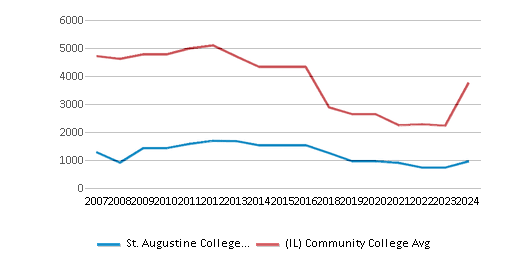
Student : Teacher Ratio
7:1
21:1
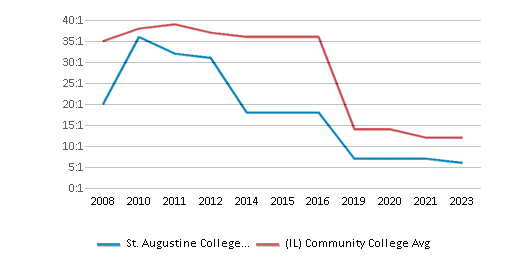
# Full-Time Students
587 students
1,007 students
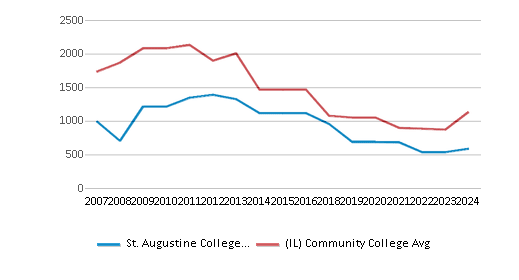
# Part-Time Students
367 students
2,747 students
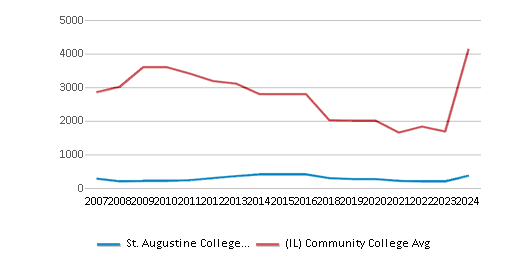
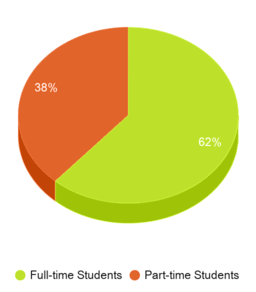

# Enrollment Undergraduate
954 students
328 students
# Full-Time Undergraduate Students
587 students
1,007 students
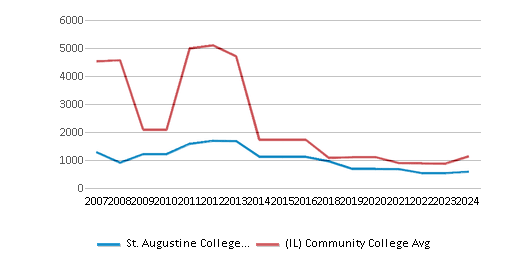
# Full-Time Graduate Students
n/a
43 students
# Part-Time Undergraduate Students
367 students
3,310 students
# Part-Time Graduate Students
n/a
18 students
Total Dormitory Capacity
n/a
132 students
% American Indian/Alaskan
n/a
n/a
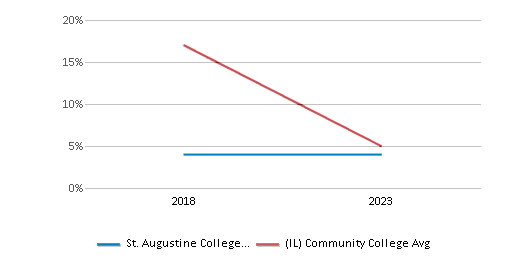
% Asian
3%
6%
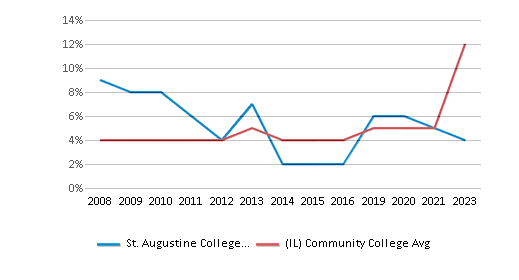
% Hispanic
76%
26%
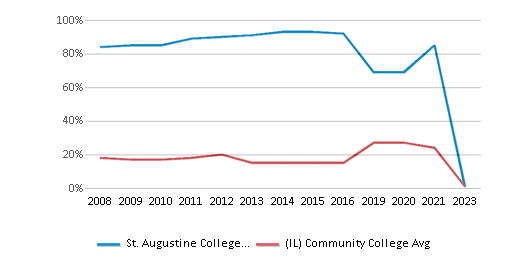
% Black
6%
13%
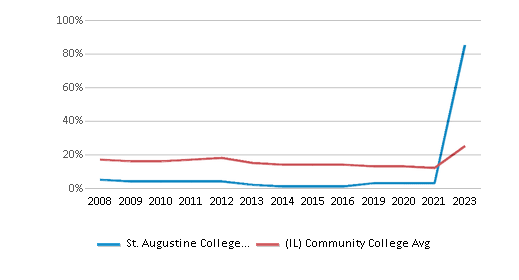
% White
2%
47%
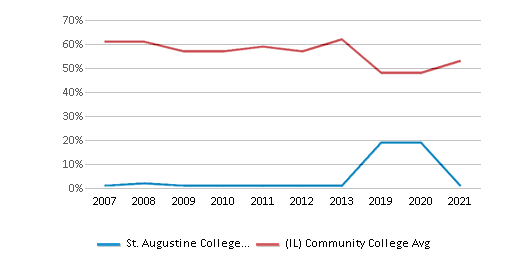
% Hawaiian
n/a
n/a
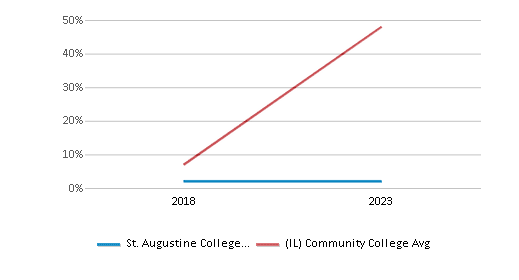
% Two or more races
n/a
3%
% Non Resident races
4%
1%
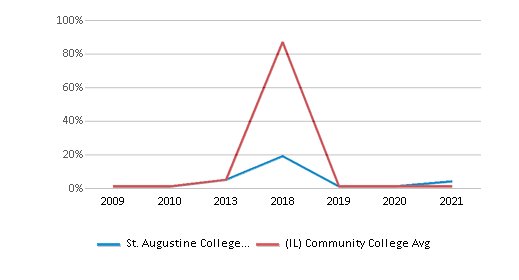
% Unknown races
8%
4%
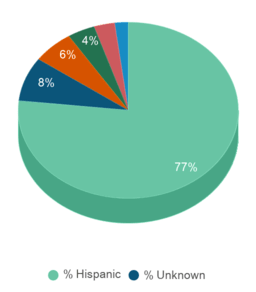

Diversity Score
0.42
0.69
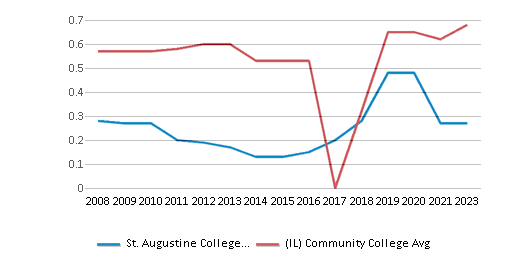
College Completion Rate (Students who graduate in less than 4 years)
n/a
0.4%
College Completion Rate (Students who graduate in 4 years or more than 4 years)
0.2291%
0.38%
Average Graduate Earnings (10 Years)
$26,700
$31,800
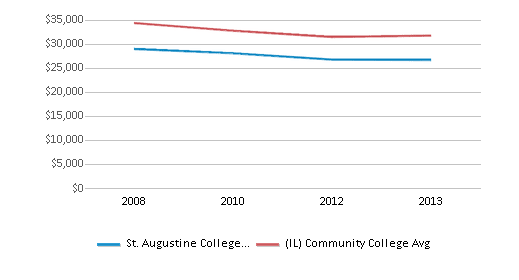
Tuition and Acceptance Rate
The private state tuition of $9,576 is less than the state average of $14,511. The private state tuition has declined by 20% over four years.
Private State Tuition Fees
$9,576
$14,511
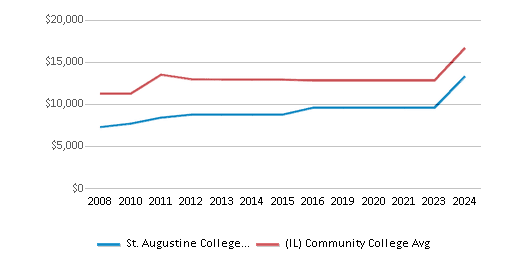
% Students Receiving Some Financial Aid
89%
82%
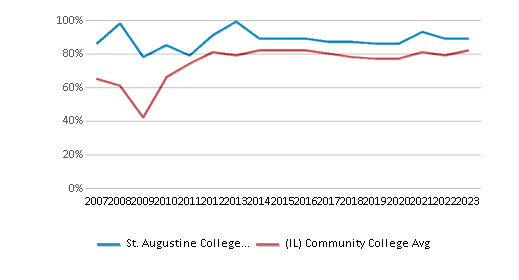
Median Debt for Graduates
$4,083
$8,187
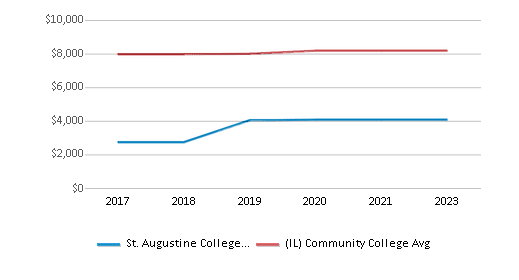
Median Debt for Dropouts
$2,250
$4,549
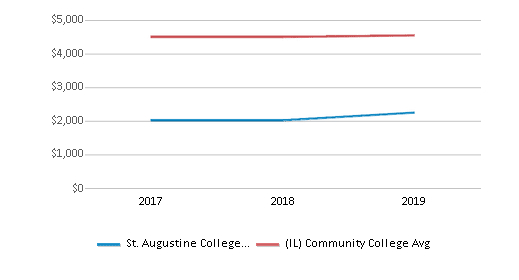
Acceptance Rate
n/a
89%
SAT Reading
n/a
390
SAT Math
n/a
360
SAT Writing
n/a
355
ACT Composite
n/a
17
ACT English
n/a
17
ACT Math
n/a
17
Source: 2024 (or latest year available) Integrated Postsecondary Education Data System (IPEDS)
School Notes
- On October 7, 1980, the Illinois State Board of Higher Education granted operating authority to the first bilingual institution of higher education in Illinois: St. Augustine College. This educational setting is unique in Illinois, as well as the entire country. It came into existence as a result of years of work, observation and research, and is based on more than ten years of community work performed by the Spanish Episcopal Services, an educational agency that was created under the auspices of the Episcopal Diocese of Chicago by Father Carlos A. Plazas, Ph.D. in 1970. The bilingual programs of St. Augustine College are recognized today as a dynamic and vibrant part of the Hispanic life of our city. Our graduates compete effectively in all sectors of our local and regional economy, in a growing number of professional programs. Their bilingual skills are recognized as valuable assets to businesses and institutions in the private and public sectors alike. The student body of St. Augustine College grows increasingly diversified, as we attract large contingents of students, representative of other ethnic and racial groups in our city. Located at the Main Campus, the Chapel of the Divine Wisdom, consecrated in 1997 by the then Episcopal Bishop of Chicago, the Rt. Rev. Frank Griswald, is the spiritual center of St. Augustine College. This quiet place of worship and reflection is a gathering place that has welcomed weddings, baptisms, Eucharistic celebrations, and funeral masses. The Chapel serves as an important reminder that this College's history and foundation is closely linked to the spiritual values of the Judeao-Christian tradition. St. Augustine College is accredited by the Commission on Institutions of Higher Education of the North Central Association of Colleges and Schools.
Frequently Asked Questions
How much does St. Augustine College cost?
St. Augustine College's private state tuition is approximately $9,576.
What is St. Augustine College's ranking?
St. Augustine College ranks among the top 20% of community college in Illinois for: Average community college minority breakdown and Least debt for graduating students.
In what neighborhood is St. Augustine College located?
St. Augustine College is located in the Uptown neighborhood of Chicago, IL. There are 1 other community '.college.' located in Uptown.
Recent Articles

Obtaining Your Bachelor's Degree at a Community College
Explore the evolving landscape of community colleges offering bachelor's degrees, addressing affordability, accessibility, and workforce needs.

A to Z of Community College Certificates and Courses
From business and healthcare to technology and skilled trades, the article showcases the breadth of options available to students seeking to enhance their knowledge, develop new skills, or pursue career advancement.

What is a Community College?
This comprehensive guide explains what a community college is, its history, and its role in higher education. It covers the types of programs offered, differences from four-year colleges, benefits of attending, and important considerations for prospective students, providing valuable insights for those exploring educational options.

